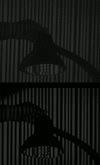Homogeneous Codes for Energy-Efficient Illumination and Imaging
Matthew O'Toole, Supreeth Achar, Srinivasa G. Narasimhan, and Kiriakos N. Kutulakos. ACM SIGGRAPH, 2015.
Programmable coding of light between a source and a sensor has led to several important results in computational illumination, imaging and display. Little is known, however, about how to utilize energy most effectively, especially for applications in live imaging. In this paper, we derive a novel framework to maximize energy efficiency by "homogeneous matrix factorization" that respects the physical constraints of many coding mechanisms (DMDs/LCDs, lasers, etc.). We demonstrate energy-efficient imaging using two prototypes based on DMD and laser illumination. For our DMD-based prototype, we use fast local optimization to derive codes that yield brighter images with fewer artifacts in many transport probing tasks. Our second prototype uses a novel combination of a low-power laser projector and a rolling shutter camera. We use this prototype to demonstrate never-seen-before capabilities such as (1) capturing live structured-light video of very bright scenes---even a light bulb that has been turned on; (2) capturing epipolar-only and indirect-only live video with optimal energy efficiency; (3) using a low-power projector to reconstruct 3D objects in challenging conditions such as strong indirect light, strong ambient light, and smoke; and (4) recording live video from a projector's---rather than the camera's---point of view.
![]() 15.siggraph.energyefficientimaging.pdf (Paper — 30.9 MB)
15.siggraph.energyefficientimaging.pdf (Paper — 30.9 MB)
![]() 15.siggraph.energyefficientimaging.supp.pdf (Supplemental material — 1 MB)
15.siggraph.energyefficientimaging.supp.pdf (Supplemental material — 1 MB)
Best Demo (ICCP 2015): Energy-Efficient Structured Light Imaging
Supreeth Achar, Matthew O'Toole, Kiriakos N. Kutulakos, Srinivasa G. Narasimhan. ICCP, 2015.
Best Demo (CVPR 2015): Energy-Efficient Structured Light Imaging
Supreeth Achar, Matthew O'Toole, Srinivasa G. Narasimhan, Kiriakos N. Kutulakos. CVPR, 2015.

Energy-Efficient Structured Light Imaging (RAW)
A regular camera (top) and our laser-based prototype (bottom) captured these video streams of a 5 Lumen projector illuminating a 1600 Lumen lamp with structured light patterns. When the lamp is turned on, the projected patterns are not visibile on the bulb or the shade for the regular camera. Our laser-based system blocks a large fraction of the ambient light, allowing the projected patterns to be seen by the camera.

Dual Videography (RAW)
Dual photography [Sen et al. 2005] is a technique that makes it possible for a projector and a camera in general position to "exchange" their viewpoints. The approach proposed by Sen et al. [2005] required thousands of actual images of the scene to be captured, and hours of processing. Our laser-based prototype captured this dual video at live framerates and with no processing. Note that, throughout this entire video sequence, the camera remains stationary; the change in viewpoint is a result of moving the projector.

New Probing Abilities: Long Range Indirect Imaging
Our DMD-based prototype captured this long-range indirect video stream of a mirror (left) and a candle (right). Since subsurface scattering is a short- to mid-range transport phenomenon, the candle appears dark. On the other hand, the mirror produces long-range transport phenomena, lighting up both the candle and the background.